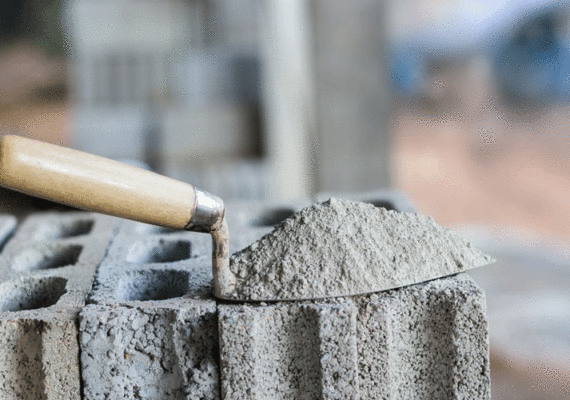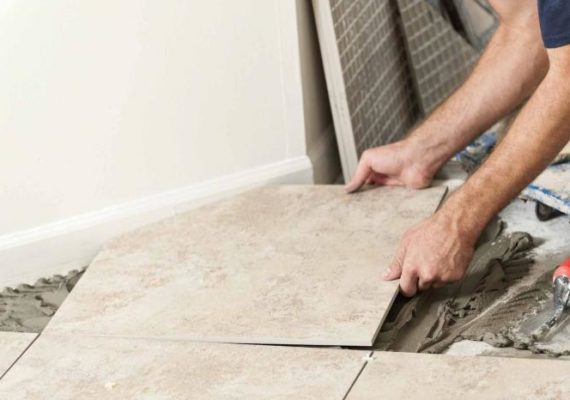What Does Grout Injection Mean In Construction?
What Does Grout Injection Mean In Construction?
Injection grouting is a technique utilized for repairing concrete or masonry structures by filling cracks, open joints, voids, or honeycombs with a material that hardens in place, thus reinforcing the structure and halting the movement of water.
The grout material is a fluid, malleable substance that must possess minimal shrinkage, ensuring that the gap or void is entirely filled and that it remains stable without crumbling, cracking, or de-lamination. Grouts come in various types, including cement grout, polymer-cement slurry, epoxy, urethane, and high-molecular-weight methacrylate (HMWM), each selected based on the compatibility of the grout with the original material.
Failing to select the appropriate grouting material may prevent the desired objectives of the grouting process from being achieved. Therefore, it is critical to select the appropriate grout material for specific concrete or masonry repair work.
Types Of Injection Grouting
Injection grouting is a process of injecting a grout material into voids or cracks in a structure to improve its strength, stability, or prevent the ingress of water or other materials.
There are several types of injection grouting, including polymer injection grouting, cement sand grouting, gas-forming grouting, fibre reinforced injection grouting and sulfo-aluminate grouting.
Polymer Injection Grouting is primarily done using polymers such as polyester epoxy, vinyl ester, polyurethane and acrylic resins. The polymer injection grouting is widely used in epoxy grout and polyurethane and acrylic resin polymers are generally used for repairing water retaining structures and underground structures as well as preventing water seepage.
💥🎁 Christmas & Year-End Deals On Amazon !
Don't miss out on the best discounts and top-rated products available right now!
🛒 Shop Now and Save Big Today!*As an Amazon Associate, I earn from qualifying purchases.
The polymer injection grouting is available in liquid resin content, curing agent or hardener and aggregate or dry filler. Different types of polymer-based injection grouting are available, including epoxy-based injection grouting, acrylic polymer-based injection grouting and lignosulfonate-based injection grouting.
Epoxy-based injection grouting is non-resistant to ultraviolet exposure and high temperatures. It is non-shrinkable, effective in sealing cracks and has good bonding with every construction material.
Acrylic polymer-based injection grouting has improved structural and tensile properties and is resistant to cracking, segregation and imperviousness. Lignosulfonate-based injection grouting compensates for drying and plastic shrinkage.
Cement sand grouting is one of the most popular and widely used groutings for the repair of concrete and masonry structures. This grout is used where strength enhancement of the structures is not essential. It is very easy to use and readily available in the market.
The cement sand grouting method requires a higher amount of water and cement content. The use of cement sand grouting will result in shrinkage and cracking of grouting at the hardening stage.
💥🎁 Christmas & Year-End Deals On Amazon !
Don't miss out on the best discounts and top-rated products available right now!
🛒 Shop Now and Save Big Today!*As an Amazon Associate, I earn from qualifying purchases.
Gas-forming injection grouting works on the principle that gas bubbles expand the grout to compensate for shrinkage of grout after its application. The gas bubbles develop a reaction of some ingredients with the cement slurry.
Gas-forming grouts are very sensitive to temperature, so they cannot be used in places where the temperature is very high. Proper confinement is required to develop good strength and volume stability. The reaction forming the gas bubbles is very fast, and it will complete before placing the grout.
Fibre-reinforced injection grouting is widely used for repairing concrete structures and masonry structural members. Fibres such as polypropylene, steel, or glass fibres are generally used for Portland cement to repair and strengthen the structural members.
Fibre-reinforced injection grouting provides good flexural strength, resistance to impact and ductility. This type of injection grouting requires skilled labour.
Sulfo-aluminate grouting is based on the principle of shrinkage compensation. In these types of grouting, the shrinkage compensating cement or anhydrous Sulfo-aluminate expansive additives are used. This helps to produce expansion after the grout has set and is more reliable than gas-forming grouts.
In conclusion, injection grouting is a useful technique for the repair of concrete and masonry structures. Polymer injection grouting, cement sand grouting, gas-forming grouting, fibre reinforced injection grouting and sulfo-aluminate grouting are different types of injection grouting that can be used depending on the needs of the structure.
💥🎁 Christmas & Year-End Deals On Amazon !
Don't miss out on the best discounts and top-rated products available right now!
🛒 Shop Now and Save Big Today!*As an Amazon Associate, I earn from qualifying purchases.
It is important to understand the characteristics of each type of injection grouting and choose the appropriate type for the specific repair situation.
Advantages Of Injection Grouting
Injection grouting is a process that has many advantages. It is easy and convenient to use, environment-friendly, suitable for repairing cracks and filling voids in structural members, provides strength and stability to masonry structural members, economical, and there is no wastage of material.
Process Of Injection Grouting
Injection grouting is a process that involves the filling of voids or cracks in concrete or masonry structures with a fluid material.
The process typically involves the following steps: drilling holes on the surface, cleaning the holes and cracks, sealing the cracks between the holes, grouting the hose connections, and injecting grout into the cracks.
The first step in the process involves drilling holes or ports in the cracks at regular intervals. The distance between the ports will depend on the type of crack, with finer cracks requiring ports closer together.
After drilling, the holes must be cleaned and flushed to remove any debris or loose material that may affect the bond between the grout and the structure. The cracks should be sprinkled with water to facilitate cleaning.
💥🎁 Christmas & Year-End Deals On Amazon !
Don't miss out on the best discounts and top-rated products available right now!
🛒 Shop Now and Save Big Today!*As an Amazon Associate, I earn from qualifying purchases.
Once the holes are clean, the cracks between the ports must be sealed with an epoxy, polyester or cementitious material. This seal must be allowed to harden before proceeding to the next step.
The next step involves grouting the hose connections. A nipple or pipe is fixed into each hole, and cement paste is applied around it to prevent movement.
Finally, the grout material is injected into the cracks with the help of an injection grouting machine. This process requires skilled labor and must be done with care to ensure that the grout is injected at the right pressure.
The temperature on the site is also an important consideration during the process of injection grouting. If the temperature is too high, the grout may not set correctly, and if it is too low, the grout may not flow properly.
Overall, the process of injection grouting is a complex one that requires careful planning and execution to ensure that the structure is reinforced properly. By following these steps, it is possible to repair and strengthen concrete or masonry structures, increasing their lifespan and durability.
💥🎁 Christmas & Year-End Deals On Amazon !
Don't miss out on the best discounts and top-rated products available right now!
🛒 Shop Now and Save Big Today!*As an Amazon Associate, I earn from qualifying purchases.
Applications Of Injection Grouting
Injection grouting is a versatile technique used to repair and strengthen structural members and masonry. Its primary application is reducing or filling cracks and voids in walls, columns and other structural elements.
Additionally, injection grouting can provide finishing to walls and make them waterproof. This method is particularly effective for repairing damage to structural or masonry members and is well-suited for addressing honeycombing.
By injecting grout into damaged areas, this technique can repair and strengthen those areas, improving the overall structural integrity of the building. Overall, injection grouting is a valuable tool for building maintenance and repair.

